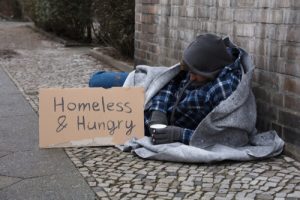Armstrong Economics Blog/Real Estate Re-Posted Aug 10, 2023 by Martin Armstrong
The housing crisis has become a massive issue in America. People with decent jobs are unable to afford housing, and those who were already down and out have little chance of survival. Then we poured the migrant crisis on top of the fire and have created a situation that is turning America into a second-world nation. Not so coincidentally, most of the homeless population lives in blue cities. The US spent over $51 billion on the homeless crisis last year, but where has the money gone?
Homelessness in the US has spiked by 65% since 2016! The Annual Homelessness Assessment Report said it is common for half a million people to be experiencing homelessness on any given night. The data is not in for 2023 when the migrant crisis really took hold after title 42 came to an end, so these figures I will present are nothing compared to our current reality in 2023. For every 10,000 Americans, 18 do not have a home. Around 72% are single adults, but an alarming 28% are families living with children. Five percent of the homeless population are unaccompanied youth under 25. Our veterans compose 6% of the homeless population as well.
Native Hawaiian or Pacific Islanders have the highest rate of homelessness with 121 out of every 10,000 people living in crisis. The Black community has a disproportionate amount of homeless too with 48.2 of every 10,000 experiencing homelessness. Native Americans come in at a close third with 44.9 out of every 10,000 having no place to call home. Sixty-eight percent of all homeless individuals are male.
The US Federal government spent over $51 billion to combat the homeless crisis in 2022, but then our government took measures to worsen the matter, and economic conditions have made it nearly impossible for those with nothing to find shelter. The National Alliance to End Homelessness estimates that a chronically homeless person will cost the taxpayers an average of $35,578 per year. Yet, where is this money going? When the migrants came through, we managed to find housing and convert buildings into temporary shelters until cities became overrun and it was impossible to manage — the federal bill for homelessness in FY22-23 will be astonishing.
As of March 2022, these cities saw the largest populations of unhoused individuals:
- Los Angeles City & County 65,111
- New York City 61,840
- Seattle/King County 13,368
- San Jose/Santa Clara City & County 10,028
- Oakland, Berkeley/Alameda County 9,747
- Sacramento City & County 9,278
- Phoenix, Mesa/Maricopa County 9,026
- San Diego City and County 8,427
- San Francisco 7,754
- Metropolitan Denver 6,884
We can see a pattern here, given that these are blue cities. Politicians touted many of these areas as “sanctuary cities” and encouraged tens of thousands of people to use the last of their resources to relocate there. And now, these people have nowhere to stay and no resources to leave. Promising sanctuary should have been a crime in itself. Criminalizing homelessness will not solve the solution and will only further burden the taxpayers. Anyone living in a major American city will tell you first-hand that the number of unhoused people has exploded in the past year. This is a SERIOUS and growing problem that is not being addressed. The government is continually throwing more money at the problem, but it is only worsening.


